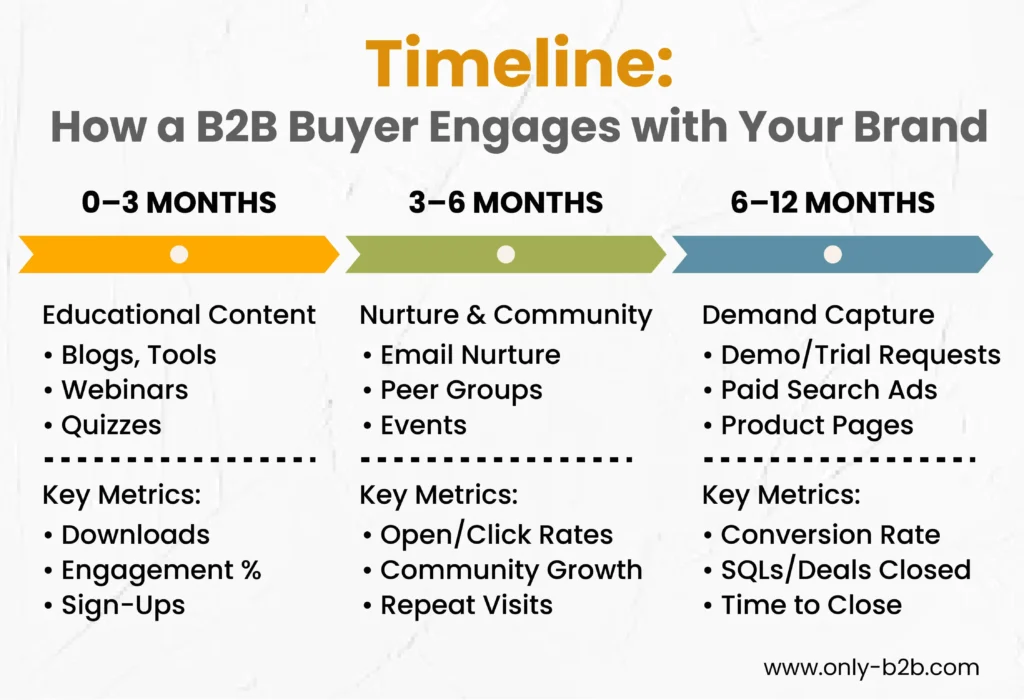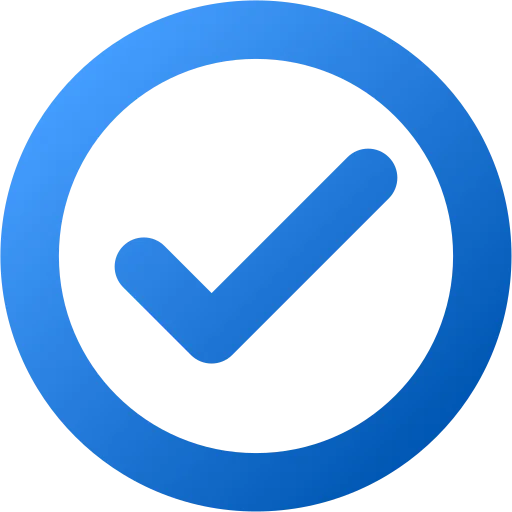Demand generation and demand capture sound similar, but they’re completely different.
Let’s make it easy for you.
Think of it like buying a car.
Demand capture is the dealership where buyers already know what they want and are ready to make a purchase.
Demand generation is everything that happens before the buyer contacts the dealer. If you help buyers dream of the long drive before they start shopping, you are creating demand.
Most marketers spend all their time in the dealership, capturing 5% of your total addressable market (TAM). The remaining 95% are not ignoring you; they’re just not ready yet.
And all marketers are fighting tooth and nail over the same 5% with ads, discounts, and endless retargeting. While a little effort, nurturing the 95% positions your brand as the go-to resource when those buyers eventually move into the active buying stage.
Before diving into strategies, let’s clarify what each term really means.
1. Understanding the Difference: Demand Generation vs Demand Capture
Table of Contents
Demand Generation
Demand generation builds awareness, interest, and trust among buyers who don’t yet realize they need you. It’s not about pushing sales. It’s about planting the idea that maybe life would be better with this kind of solution.
Examples include:
- Educational blogs, guides, and whitepapers that inspire curiosity.
- Thought leadership on LinkedIn or industry panels that make your brand an expert that people trust.
- Webinars and podcasts on emerging challenges.
- Tools, templates, and assessments that help identify hidden performance issues.
The goal: Not just to make buyers aware of the brand. It helps buyers dream about the drive even before they buy. So wherever they finally decide to buy, you will be at the top of their mind when they finally decide to purchase.
Demand Capture
Demand capture focuses on those ready-to-buy moments. It’s the point where curiosity turns into action. It’s about being present, persuasive, and precise when buyers start searching, evaluating, and taking action.
Examples:
- Paid search campaigns targeting bottom-funnel keywords.
- Product comparison pages and demos.
- Retargeting and lead capture forms for those who showed interest.
- Reviews, case studies, and testimonials for trusted recommendations.
The goal: Not just to close the sale, but to be the brand they trust when they finally make the buying decision.
What’s Broken in Most B2B Workflows
In many B2B companies, marketers too heavily lean on the short-term side, demand capture.
And that makes sense when sales pressure is real, and dashboards love immediate proof. But when you put all the resources on the 5% who are ready to close, you are starving tomorrow’s growth.
The workflow isn’t broken. It’s out of balance. You can’t press the accelerator harder without realizing your fuel tank is empty. You need both fuel and acceleration to move the business forward.
Signs of this imbalance are:
- Long sales cycle: Prospects weren’t properly educated early on and require heavy hand-holding.
- High cost per lead (CPL) and rising acquisition cost: You’re competing for the same small pool of active buyers.
- Pipeline flattening: Lots of content and ads equal traffic, but few meaningful leads because you didn’t build awareness.
- Marketing and sales misalignment: Marketing hands over cold leads that haven’t been primed, and sales says, “We need better leads.”
Fixing your Demand Workflow
To fix your workflow, you need to map where buyers are and where your tactics should be.
Demand Generation and Demand Capture Comparison

Examples:
- Pre-funnel: A SaaS company builds a “Workflow Efficiency” quiz for Ops Heads. It helps them catch a latent problem they hadn’t surfaced, captures their email, and nurtures them when they become problem-aware.
- In-funnel: The same company runs ads targeting “workflow automation pricing,” a comparison page with case studies, and a demo CTA. It targets those considering your solutions.
The tension between the two is real. They aren’t rivals. They are stages of the journey. Sure, the generation spins slowly. But when aligned with the capture gear, you catch buyers when they finally become active.
How to Shift Your Marketing Workflow
Here’s how to align both strategy awareness and conversion. Both should move in sync.
Step A: Reallocate Budget and Resources by Stage
If you’re generating leads but struggling to convert, focus on demand capture. You should optimize landing pages, improve CTAs, and invest in paid search.
If you’re converting well but seeing slow growth or rising CPL, tune in to demand. Create educational content, expand thought leadership, and build brand visibility.
Experts say that a 70:30 generation (long-term) to capture (short-term) ratio is the golden ratio, meeting today’s needs while filling out the pipeline for tomorrow.
Step B: Define and Track the Right Metrics
Tracking performance is the way to check if all your systems are working smoothly, not just speed.
Generation metrics: Branded search volume, webinar attendance, repeat visits, and content engagement (they tell you the pipeline is warming up).
Capture metrics: Demo sign-ups, landing page conversions, CPL, SQLs, and lead-to-opportunity time (they show how efficiently you’re accelerating).
Build a dashboard that tracks on different cadences: weekly for capture, monthly for generation, and quarterly for attribution.
When both dials move together, you’re not just driving fast; you’re driving smart.
Step C: Create a Calendar That Blends Both Motions
Know when to navigate to demand and when to capture. Your approach should balance quick tactical moves with long-term momentum.
Monthly (Generation): Publish thought leadership, launch a quiz or webinar, foster community conversations.
Weekly/Bi-weekly (Capture): Refresh landing pages, run PPC campaigns, A/B test CTAs, optimize retargeting.
Quarterly: Evaluate how many closed deals started with early-stage engagement, your “fuel efficiency” metric.
Examples:
- Generation: A company’s LinkedIn series, “Why Manual Workflows Drain 15% Productivity,” increased repeat visits by 30%.
- Capture: A campaign targeting “Workflow Automation Comparison 2025” improved demo-to-SQL conversion by 25% and dropped cost per SQL by 18%.
That’s how you keep both awareness and acquisition running smoothly.

Step D: Align Sales and Marketing Handoff
Marketing and sales must work like each other’s shadows. Marketing should hand off leads with context (“Completed quiz,” “Attended webinar”), and sales should pick up tailored assets such as case studies, ROI calculators, and responses that continue the same conversation.
Speed is a game-changer. Make sure high-intent leads from capture need quick follow-up, and early-stage leads from generation need nurturing until the timing is right. Together, both teams should move like a well-synced pit crew, efficient, informed, and always in motion.
The Perfect Balance
Demand generation fills up your pipeline; demand capture helps you get it to the other side of the funnel. You can’t drive far without each other.
A balanced strategy looks like this:
- Use educational content and SEO to spark awareness.
- Use retargeting and paid search to capture intent when it matures.
- Keep consistent messaging across every stage, from the first spark of curiosity to the final handshake.
This creates a loop of learning and conversion:
Educate → Engage → Capture → Retain → Advocate.
The more gracefully you shift between the two, the farther your growth engine takes you.
Takeaway
Your marketing workflow isn’t broken; it’s unbalanced.
Focusing only on demand capture fills the lot today but empties the pipeline tomorrow.
Focusing only on demand generation fuels dreams but never brings them to your showroom.
Balance both, and you will not run out of qualified leads in the next quarter. If you think you are feeling short on either of them, it’s time to repair your demand workflow.
Educate before they buy, and accelerate when they’re ready, are the worldly-wise.

Vikas Bhatt is the Co-Founder of ONLY B2B, a premium B2B lead generation company that specializes in helping businesses achieve their growth objectives through targeted marketing & sales campaigns. With 10+ years of experience in the industry, Vikas has a deep understanding of the challenges faced by businesses today and has developed a unique approach to lead generation that has helped clients across a range of industries around the globe. As a thought leader in the B2B marketing community, ONLY B2B specializes in demand generation, content syndication, database services and more.





